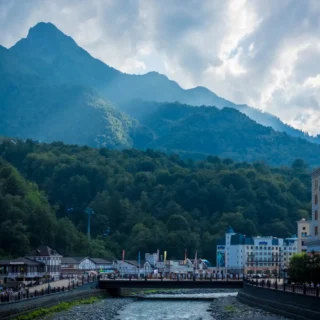5 Hidden Philippine Destinations That Heal the Soul
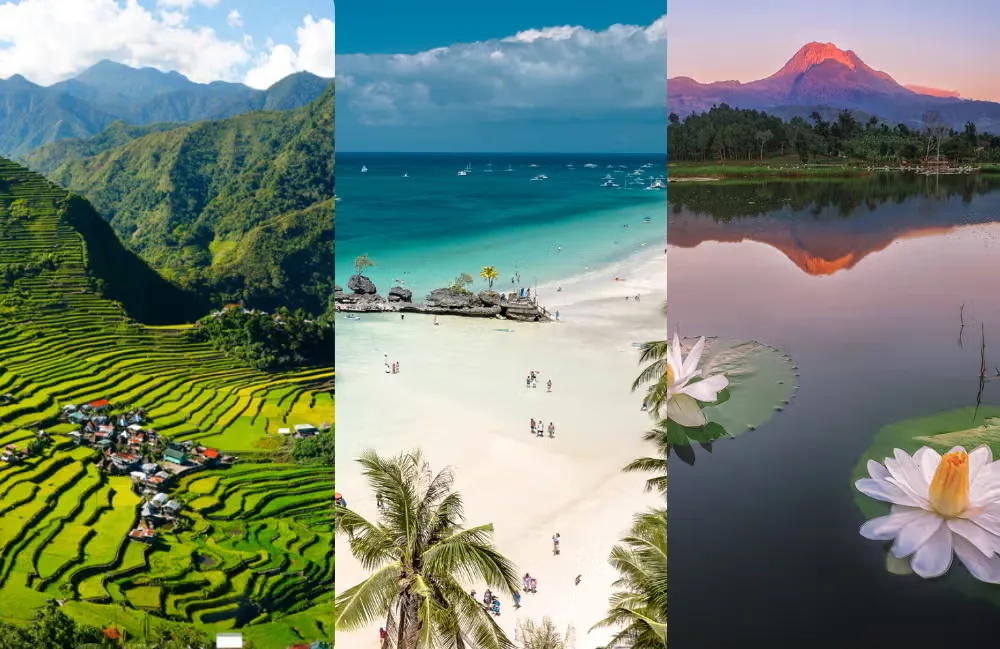
The Philippines’ hidden gems aren’t just postcard-perfect. They are places where the rush of everyday life fades, where silence and cultural wisdom become part of the journey. For many travelers—whether solo explorers seeking reflection, families craving reconnection, or locals and internationals wanting to step outside the tourist trail—going off the beaten path in the Philippines is less about skipping crowds and more about finding spaces that nurture balance, perspective, and inner calm.
Science supports this pull toward the remote. According to the International Journal of Environmental Research and Public Health, time spent in natural settings reduces cortisol levels, improves focus, and restores emotional well-being drained by city living. Meanwhile, immersion in local traditions fosters empathy and community connection, both linked to improved mental health.
Just as studies in Japan highlight the benefits of forest bathing (shinrin-yoku), these hidden gems offer their own version of natural therapy—a blend of stillness, cultural wisdom, and awe-inspiring landscapes. Imagine stargazing at Lake Holon’s crater rim or paddling through Bojo River’s mangroves; these aren’t just escapes, they are living laboratories of restoration where nature teaches resilience and community guardianship nurtures healing.
In this guide, we’ll explore five destinations that do more than showcase beauty. Lake Holon, Bucas Grande, Sagada, Bojo River, and San Vicente invite you to pause, listen, and let both nature and culture work their quiet magic on the soul.
Disclaimer: This blog is for informational and educational purposes only. We are not affiliated with any of the sources, studies, or organizations cited. External links are provided solely for reference, and we do not endorse or have partnerships with these entities. Readers are encouraged to verify information independently before making travel or wellness decisions.
Spot 1: Lake Holon, South Cotabato
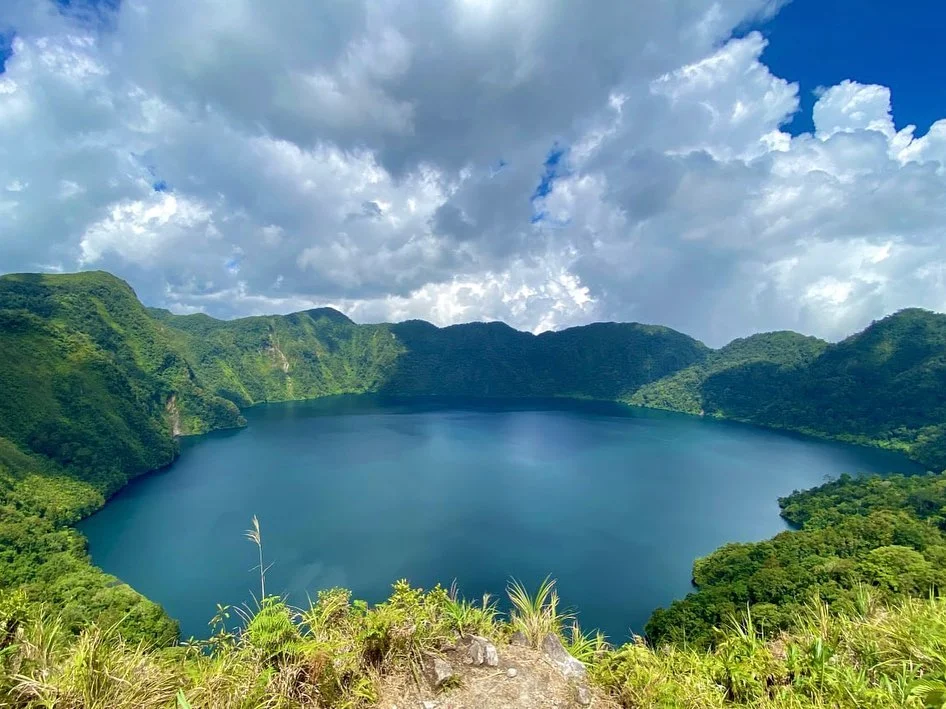
Tucked inside Mt. Melibengoy in South Cotabato, Lake Holon is often called the “Crown Jewel of the South.” The name comes from its breathtaking clarity and pristine setting—a crater lake formed centuries ago by a volcanic eruption. Beyond its natural beauty, it is also a sacred space for the T’boli people, who believe the lake is the dwelling of spirits and a site for spiritual cleansing. With its mirrored waters and quiet forests, it is one of Mindanao’s most tranquil sanctuaries. The best time to visit is during the dry season from November to May, with January to March offering the clearest night skies.
Activities:
- Trekking with local guides along 3–4 hour trails through rivers and forested slopes not only challenges the body but also grounds you mentally, easing stress and building resilience.
- Stargazing by the lakeside fosters awe and perspective, emotions shown in research to reduce rumination and anxiety after even a 30-minute nature walk.
- Joining weaving or storytelling sessions with the T’boli creates empathy, cultural respect, and a sense of belonging.
Optional Side Trip:
- Visit nearby Lake Sebu, home of the T’boli dreamweavers who craft T’nalak, a sacred textile patterned from dreams.
- Experience the Seven Falls Zipline for an exhilarating adrenaline release.
- Join weaving workshops for a creative and meaningful connection to ancestral artistry.
From the stillness of Lake Holon, let’s move east to a place where lagoons and limestone cliffs create a world of wonder.
Spot 2: Bucas Grande Islands, Surigao del Norte
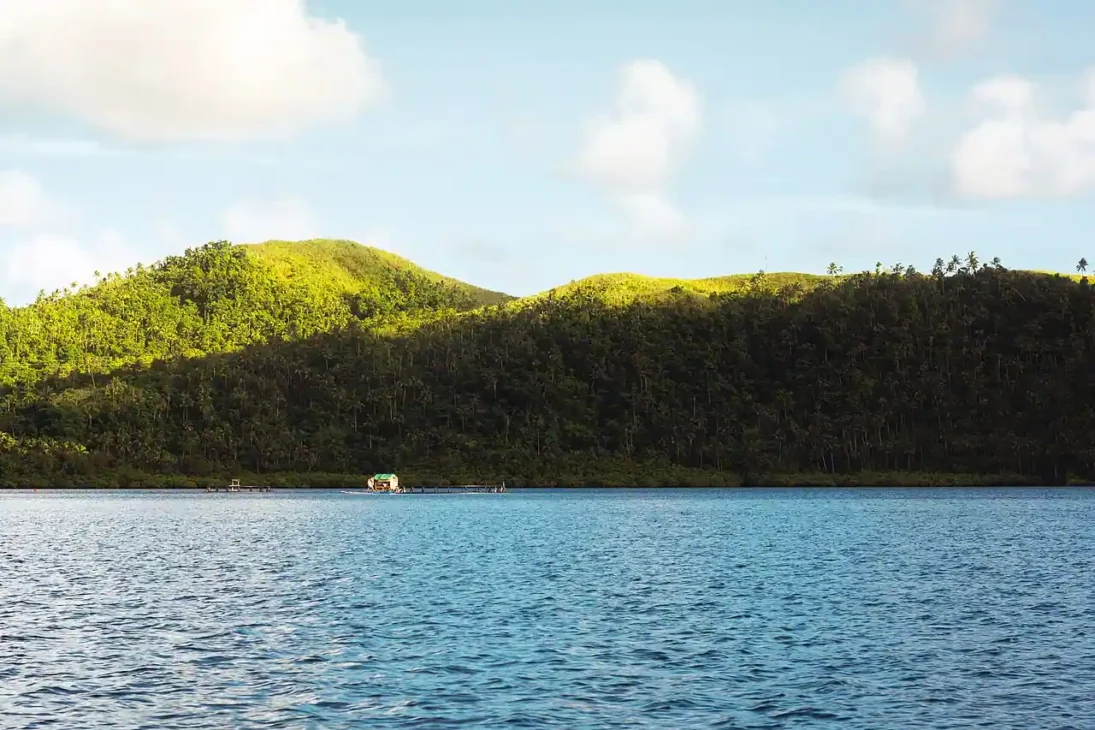
Near Siargao lies Bucas Grande, a cluster of islands filled with secret lagoons, limestone caves, and the famous stingless jellyfish sanctuary. Locals describe Sohoton Cove as mystical, with its maze of cliffs and turquoise waters that feel like stepping into a natural cathedral. This hidden corner of Surigao del Norte is perfect for both quiet reflection and awe-inspiring adventure. The best time to visit is March to June, when the seas are calm and jellyfish season is at its peak, or September to November for surfers heading to nearby Siargao.
Activities:
- Kayaking through emerald lagoons creates a calming rhythm, easing mental tension.
- Swimming with stingless jellyfish, a rare species that cannot sting humans, awakens childlike wonder, proven to boost joy and emotional health.
- Exploring caves with local guides blends excitement with storytelling, strengthening focus and cultural connection.
Optional Side Trip:
- From Bucas Grande, you can reach Siargao by a 2–3 hour boat ride from Socorro Port. Once there, try surfing lessons or yoga retreats by the beach.
- Immerse yourself in the island’s surf culture, which encourages mindful flow and physical release.
After the mystery of Bucas Grande, it’s time to journey north to the highlands, where pine forests and ancient traditions offer a different kind of healing.
Spot 3: Sagada’s Echo Valley and Hanging Coffins
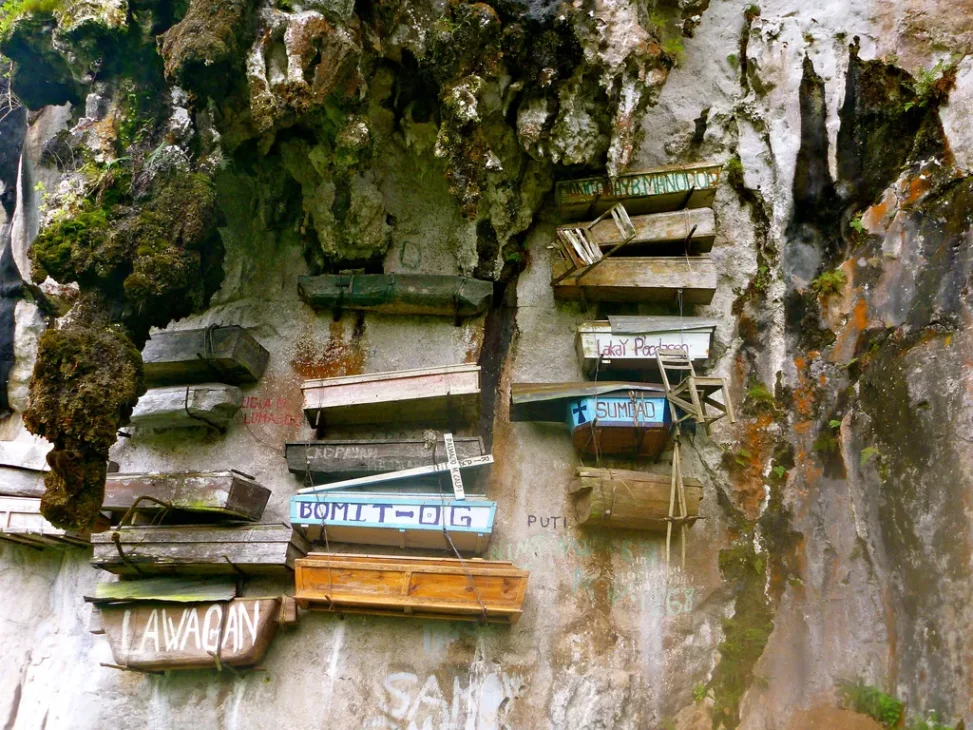
Sagada, nestled in the Mountain Province, is best known for its pine forests, caves, and breathtaking rice terraces. Yet it is Echo Valley and the Hanging Coffins that most deeply embody its cultural legacy. For centuries, the Igorot people have practiced this sacred burial tradition, placing coffins on limestone cliffs to bring the dead closer to the afterlife. Visitors are encouraged to approach the site quietly and respectfully, as it remains deeply meaningful to the community. The surrounding pine forests add serenity, making it both a cultural and healing destination. The best time to visit is from November to February, when the cool mountain air makes hiking especially refreshing.
Activities:
- Hiking through pine forests serves as natural forest therapy, lowering stress hormones and easing mental fatigue.
- Reflecting on the hanging coffins—with guidance to remain respectful—can inspire gratitude, acceptance, and resilience.
- Engaging with local elders through cultural tours fosters belonging and a deeper understanding of life’s cycles.
Optional Side Trip:
- Travel about 3–4 hours north of Sagada to reach Buscalan Village in Kalinga, home of Apo Whang-Od, the last traditional hand-tap tattoo artist.
- Receive a batok tattoo, not just as ink but as a living story etched on your skin, connecting you to ancestral wisdom.
Leaving the mountains behind, let’s travel back to the coast, where a river community has turned conservation into a way of healing.
Spot 4: Bojo River, Cebu
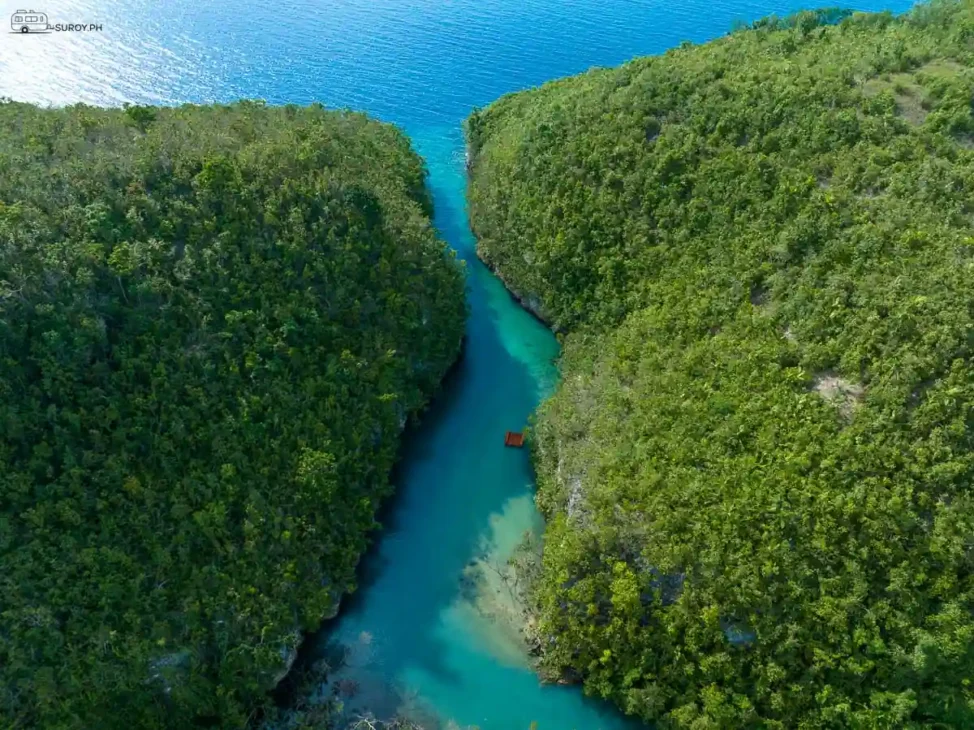
In Aloguinsan, Cebu, the Bojo River winds through lush mangroves and vibrant bird habitats. Once neglected, the river has been revived by the Bojo Aloguinsan Ecotourism Association (BAETAS), a community-led initiative that turned it into a global model of sustainable tourism. Today, it is celebrated internationally as a success story that blends natural beauty with cultural stewardship. The best time to visit is between December and May, when the weather is dry and river cruising is most serene.
Activities:
- Cruising the river on paddle boats (lasting about 1–1.5 hours) relaxes the nervous system with the soothing sounds of flowing water and birdsong.
- Birdwatching and photography sharpen mindfulness and presence, reducing mental clutter.
- Learning about mangrove conservation nurtures a sense of purpose and belonging, reminding you that healing is both personal and collective.
Optional Side Trip:
- Head to Moalboal, famous for its sardine run and turtle encounters.
- Swimming alongside thousands of sardines sparks awe and wonder, deepening your connection to the ocean’s rhythms. The sardine run happens year-round, but mornings offer the clearest waters and best visibility.
Finally, from the mangroves of Cebu, we head to Palawan, where the longest beach in the Philippines invites you to slow down and breathe.
Spot 5: San Vicente, Palawan
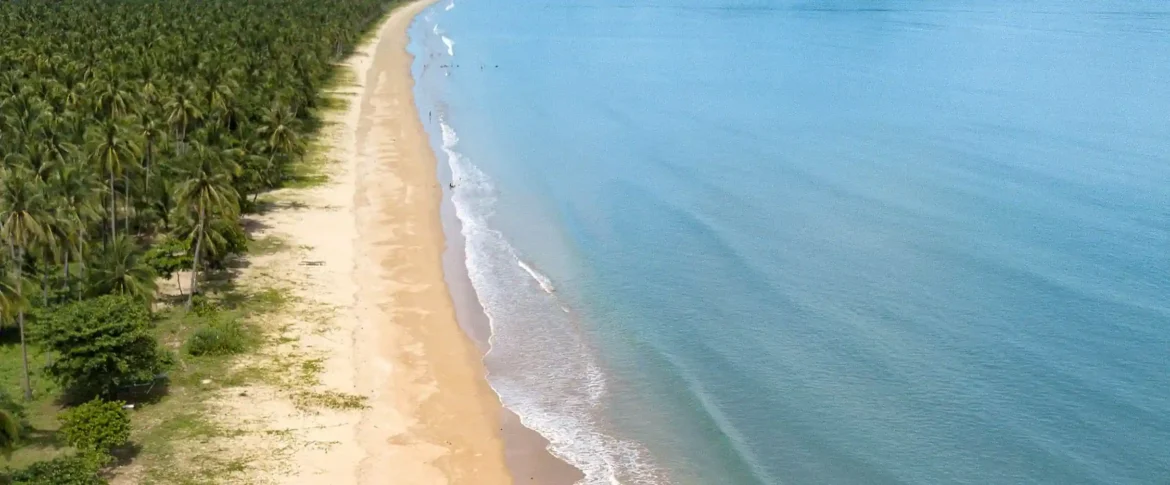
While Palawan is often associated with El Nido and Coron, San Vicente offers a quieter alternative with its 14-kilometer Long Beach — the longest stretch of white sand in the Philippines. This unspoiled coastline, lined with fishing villages and hidden coves, preserves both cultural authenticity and natural stillness. It’s a place where time slows down, making it perfect for grounding and renewal. The best time to visit is from November to April, when the seas are calm and the skies are clear.
Activities:
- Walking barefoot along the sand (earthing) reduces inflammation, improves sleep, and grounds your body in nature.
- Sunrise or sunset meditation helps still racing thoughts, replacing them with clarity and calm.
- Joining fishing trips with locals offers insight into simple, mindful living, aligning your rhythm with nature.
Optional Side Trip:
- Travel to Port Barton, a coastal village about 1.5–2 hours from San Vicente by van or boat.
- Enjoy laid-back island-hopping tours, snorkel among vibrant reefs, and lounge on empty beaches for soulful stillness and raw beauty.
Together, these five destinations show that the Philippines’ hidden gems are more than places to see—they are experiences that nurture body, mind, and spirit, preparing you for the next step of your healing journey.
FAQs
1. Do I need special permits or guides to visit these places?
Yes, some spots like Lake Holon and the Bojo River require permits or guided tours. These not only ensure safety but also support local communities who act as stewards of the land.
2. What should I pack for these off-the-beaten-path Philippines trips?
Lightweight hiking shoes, a reusable water bottle, eco-friendly sunscreen, and insect repellent are must-haves. Don’t forget a power bank and cash, since some areas have limited connectivity and no ATMs.
3. Are these hidden gems safe for solo travelers?
Generally, yes. Most of these destinations have strong community-based tourism programs, meaning locals are welcoming and protective of visitors. As with any trip, practice basic precautions like informing someone of your itinerary and avoiding late-night solo walks.
4. What health precautions should I consider before going?
Stay hydrated and wear proper sun protection, especially in coastal and highland areas where heat can be intense. For rural destinations, carry a basic first aid kit and check ahead if you need vaccinations or medications (like anti-malarials in some provinces).
5. What should I know about climate and weather when planning?
The Philippines has two main seasons: dry (November to May) and wet (June to October). Highlands like Sagada can get chilly at night, while coastal spots can be very humid. Always check local forecasts since the weather can shift quickly, especially in island regions.
Finding Your Own Hidden Gem
These five off-the-beaten-path Philippines destinations prove that travel in the country can be both restorative and meaningful. Lake Holon teaches grounding through its sacred stillness, Bucas Grande awakens wonder, Sagada offers perspective on life’s impermanence, Bojo River reconnects you with community stewardship, and San Vicente reminds you to slow down with every barefoot step along its shores.
Healing doesn’t always happen in clinics or therapy rooms; it often begins in moments of awe, silence, and connection with the world around us. When you choose to journey away from the main tourist trail, you also choose to care for your mental health in ways both science and tradition affirm.
So the next time you plan a trip, think beyond the usual routes. Ask yourself: Which hidden place will not just take me somewhere new, but bring me closer to myself? Pack your curiosity, embrace the silence, and let the Philippines’ hidden gems guide your healing.
Your soul deserves more than just a vacation; it deserves a journey that restores, reconnects, and truly transforms.
Which hidden gem will you explore to recharge your soul? Before you go, remember to check updated travel advisories, local guidelines, and sustainable practices—because protecting these treasures ensures they continue to heal both travelers and the communities who call them home.
